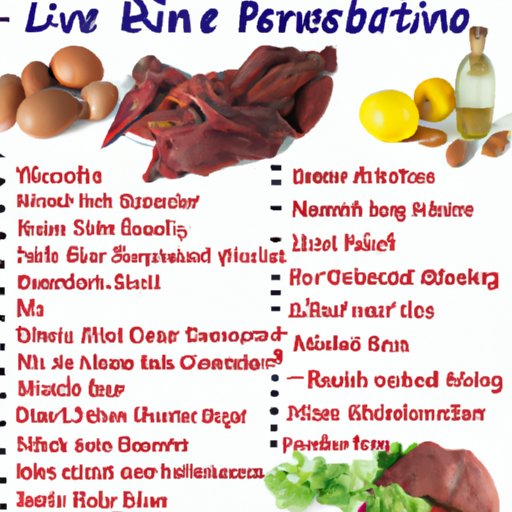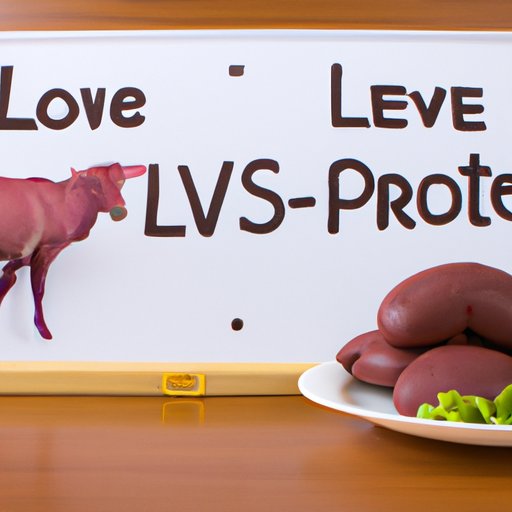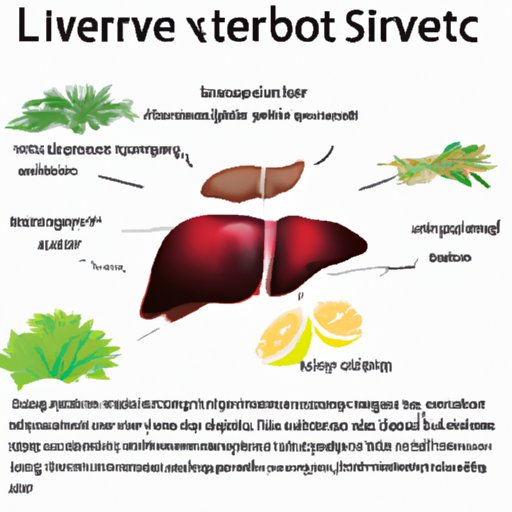
Overview of the Nutritional Benefits of Eating Liver
Liver is one of the most nutrient-dense foods on the planet, with a wide range of vitamins and minerals that are essential for good health. It’s an excellent source of high-quality protein, and contains essential fatty acids, B vitamins, iron, copper, zinc, and selenium. Here’s a more detailed look at the nutrients found in liver:
- Vitamin A: Liver is especially rich in this vitamin, which is important for proper eye health, skin health, immune function, and reproduction.
- Vitamin B12: This nutrient helps to form red blood cells and is important for proper brain and nervous system functioning.
- Folate: This B vitamin is important for DNA synthesis, cell division, and proper metabolism.
- Iron: Liver is a great source of this mineral, which is essential for transporting oxygen throughout the body.
- Copper: Copper helps to form connective tissue and is important for the absorption of iron.
- Zinc: This mineral is important for wound healing, immune function, and healthy skin.
- Selenium: This trace mineral plays a role in thyroid hormone metabolism and is important for proper immune function.
The health benefits associated with eating liver are numerous. The high concentrations of vitamins and minerals found in liver help to boost energy levels, improve cognitive function, strengthen bones and teeth, regulate hormones, and support a healthy immune system. Additionally, liver is a good source of the antioxidant glutathione, which helps to protect the body from free radical damage.

The Pros and Cons of Eating Liver
Like any food, there are both advantages and drawbacks to eating liver. Let’s take a closer look at the pros and cons of adding liver to your diet.
Advantages of Eating Liver
- It’s very nutrient-dense, providing a wide range of essential vitamins and minerals.
- It provides a good source of high-quality protein.
- It’s an excellent source of essential fatty acids.
- It’s a good source of the antioxidant glutathione.
- It’s relatively inexpensive compared to other animal proteins.
Possible Drawbacks of Eating Liver
- It can contain high levels of cholesterol, which may be a concern for some people.
- It can contain toxins that accumulate in the animal’s body, such as environmental pollutants.
- It has a strong flavor that may not appeal to everyone.
How to Cook Liver for Maximum Nutritional Value
When it comes to cooking liver, there are several different methods you can use. Liver can be boiled, steamed, baked, grilled, fried, or sautéed. Some of the best ways to prepare liver are to boil or steam it, since these methods require minimal oil and help to retain more of the nutrient content. Here are some tips for preparing liver:
- Soak the liver in milk for 30 minutes before cooking to reduce the “gamey” flavor.
- Season the liver with herbs and spices to enhance the flavor.
- Cook the liver quickly over high heat, since longer cooking times can cause it to become tough and dry.
- Be sure not to overcook the liver, as this will reduce the nutrient content.
- Serve the liver with vegetables to increase the nutrient content of the meal.
Recipes for Liver Dishes that Taste Great
Once you know how to cook liver properly, you can start experimenting with different recipes. There are many traditional recipes that make use of liver, such as calves’ liver and bacon, liver pâté, and liver and onions. Here are some creative modern recipes that make use of liver:
- Liver and Mushroom Ragu: This Italian-inspired dish combines pan-fried calf’s liver with mushrooms, garlic, rosemary, white wine, and tomato sauce, served over polenta or mashed potatoes.
- Liver and Leek Pie: This savory pie is made with a base of beef liver, leeks, and mushrooms, topped with a flaky pastry crust.
- Spicy Chicken Liver Pâté: This flavorful pâté is made with chicken livers, garlic, shallots, chilies, and herbs, blended until smooth and served with crackers or toast.
- Liver and Bacon Burgers: These juicy burgers combine ground beef, pork liver, and bacon, seasoned with spices and served on a bun with your favorite toppings.

Tips for Incorporating Liver into Your Diet
If you’re new to eating liver, it can be helpful to start by incorporating small amounts into your diet. Try adding a few slices of cooked liver to salads or sandwiches, or using it as a topping for pizza or pasta. You can also try blending it into sauces or soups. Here are some tips for making liver more palatable:
- Add herbs and spices to enhance the flavor.
- Mix it with other ingredients, such as ground beef, to mask the flavor.
- Marinate it before cooking to help tenderize it and reduce the gamey flavor.
As a general rule, it’s best to limit your intake of liver to no more than 3-4 ounces per week. This will help to ensure that you don’t get too much of any one nutrient, as well as help to prevent any potential adverse effects from eating too much liver.
Common Misconceptions about Eating Liver
Despite the many nutritional benefits of eating liver, there are still many misconceptions about it. Some people believe that eating liver is unhealthy due to its high cholesterol content, while others think that it’s difficult to digest or that it tastes bad. Here are some of the most common myths about liver, and why they aren’t necessarily true:
- Myth: Eating liver is bad for your health.
Fact: Although liver does contain high levels of cholesterol, it is also packed with essential vitamins and minerals that are beneficial for your health. Eating small amounts of liver can actually be beneficial for your health.
- Myth: Liver is difficult to digest.
Fact: Liver is actually quite easy to digest. As long as it is cooked properly and eaten in moderation, it should not cause any digestive problems.
- Myth: Liver tastes bad.
Fact: Liver does have a strong flavor, but it can be masked with the right seasonings and cooking techniques. With the right recipe, liver dishes can be surprisingly tasty.

The Role of Liver in Traditional Diets Around the World
In many parts of the world, liver is a staple in the diet. In countries like China, Japan, and Mexico, liver is often eaten as part of a traditional diet. This is because liver is an inexpensive source of high-quality protein, as well as a rich source of essential vitamins and minerals. Additionally, liver is easily preserved, making it a convenient and shelf-stable food item.
Eating liver can provide numerous nutritional benefits for your health. It’s an excellent source of vitamins and minerals, and can help to boost energy levels, improve cognitive function, strengthen bones and teeth, regulate hormones, and support a healthy immune system. Now that you know more about the nutritional benefits of eating liver, you can start experimenting with different recipes and incorporating it into your diet.
(Note: Is this article not meeting your expectations? Do you have knowledge or insights to share? Unlock new opportunities and expand your reach by joining our authors team. Click Registration to join us and share your expertise with our readers.)
